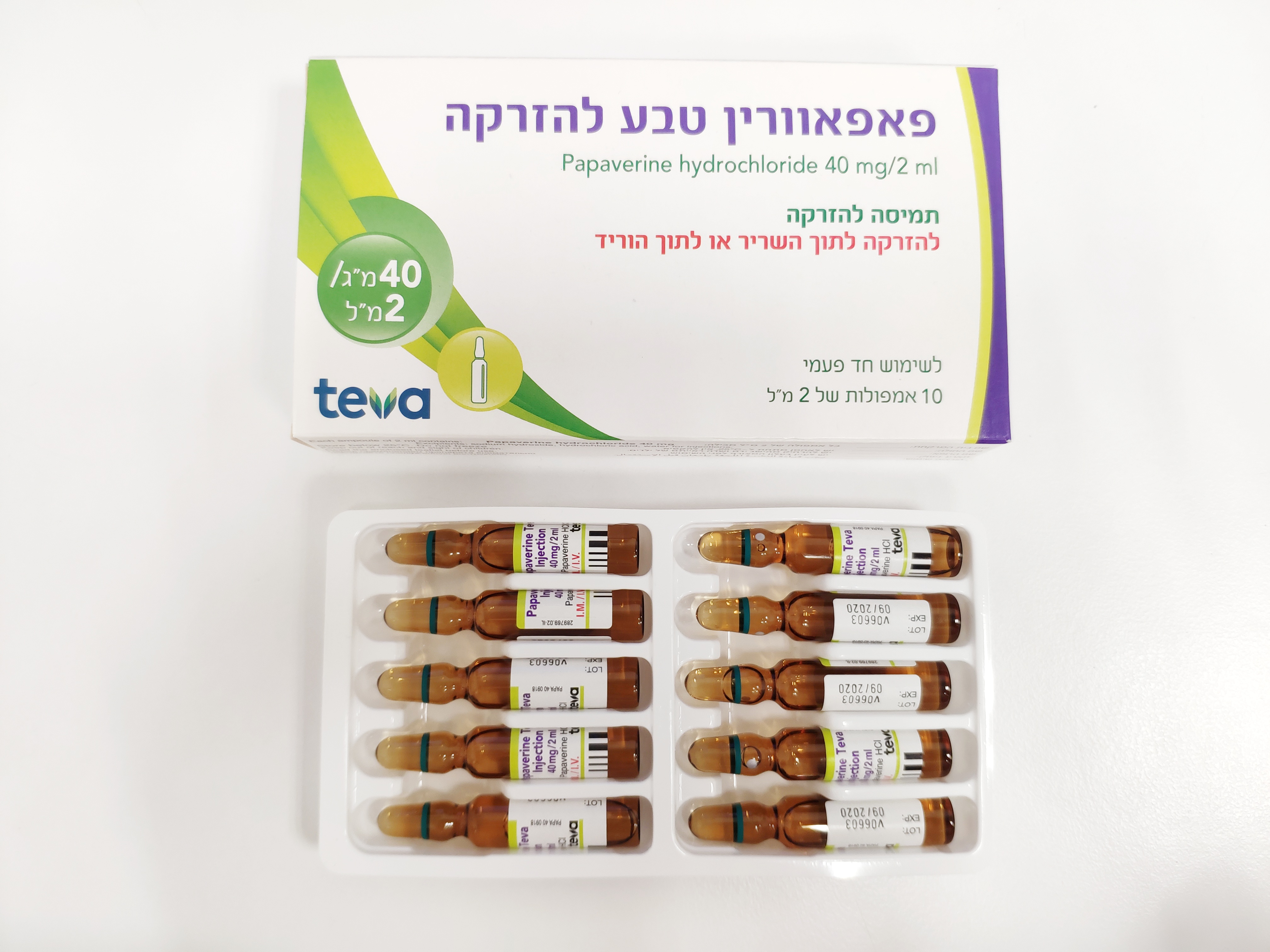Quest for the right Drug

פאפאוורין טבע להזרקה PAPAVERINE TEVA INJECTION (PAPAVERINE HYDROCHLORIDE)
תרופה במרשם
תרופה בסל
נרקוטיקה
ציטוטוקסיקה
צורת מתן:
תוך-שרירי, תוך-ורידי : I.M, I.V
צורת מינון:
תמיסה להזרקה : SOLUTION FOR INJECTION
עלון לרופא
מינוניםPosology התוויות
Indications תופעות לוואי
Adverse reactions התוויות נגד
Contraindications אינטראקציות
Interactions מינון יתר
Overdose הריון/הנקה
Pregnancy & Lactation אוכלוסיות מיוחדות
Special populations תכונות פרמקולוגיות
Pharmacological properties מידע רוקחי
Pharmaceutical particulars אזהרת שימוש
Special Warning עלון לרופא
Physicians Leaflet
Pharmacological properties : תכונות פרמקולוגיות
Pharmacodynamic Properties
5.1 Pharmacodynamic properties Pharmacotherapeutic group: Smooth muscle antispasmodic, including for the gastrointestinal and urogenital system. ATC code: A03AD01. Papaverine is a direct-acting and non-specific smooth muscle relaxant causing an effect on the blood vessels (vasodilator action) and other smooth muscle systems. Papaverine can also depress conduction in the heart muscle and prolong the diastolic period. The cerebral blood flow is increased in most cases, and this effect has a short duration. The peripheral vasodilator effect is of variable intensity and probably depends on the development stage of artery and arteriole wall sclerosis, and therefore is probably inversely proportional to the severity of the vascular pathology. Papaverine is effective in the symptomatic treatment or prevention of spasms. Papaverine blocks, to a certain extent, the flow of Ca++ ions across the cell membrane, which explains the anti-tachyarrhythmic activity. The intensity of this blockage may vary from one vascular site to another as well as from one individual to another. It is clear that the wide range of pharmacological activities makes papaverine useful in a great variety of vessel and/or visceral conditions. The effect is evident in most cases, with a short duration, and non-curative.
Pharmacokinetic Properties
5.2 Pharmacokinetic properties After injection, papaverine hydrochloride is rapidly distributed in the organism. The half-life time is 90-130 minutes and the apparent volume of distribution is 0.99-1.52 L/kg. The substance is highly bound to plasma proteins (87%). After intravenous administration of a 1 mg/kg dose, a blood level of 1 mg/L is reached in 5 minutes. Metabolism Ninety percent of papaverine hydrochloride is metabolized in the liver in a few hours. The initial step of metabolism is demethylation to 6-hydroxypapaverine or 4-hydroxypapaverine and, in turn, their phenolic group is affected by the glucurono- or sulfoconjugation. It should be noted that 4-hydroxypapaverine also has a clinically significant phosphodiesterase inhibitory activity. Elimination Elimination is carried out by the renal route as unmetabolized papaverine (less than 1% is found unchanged in the urine) and as metabolites (more than 50%). The rest is eliminated by the bile.

שימוש לפי פנקס קופ''ח כללית 1994
לא צוין
תאריך הכללה מקורי בסל
לא צוין
הגבלות
לא צוין
מידע נוסף
